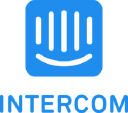How We Created A $40K/Month 1-Click Integrations Platform
Hello! Who are you and what business did you start?
I'm Abhishek A Agrawal and I'm the founder of Integrately and CompanyHub.
Our first product was CompanyHub CRM - the world's easiest CRM. Most salespeople hate using CRMs because they are complex and time-consuming. CompanyHub is as easy as excel. They can do most of the things from a single page. It is ranked in top CRMs globally by G2, the leading software rating site.
Recently we launched Integrately - 1 click integration platform. Companies need to integrate different apps that they use for different purposes. But most integration platforms are very complex. Integrately provides ready integrations. So you can automate your processes in 1 click!
Integrately acquired approx. 1,500 paid customers within 1 month of launching the beta. This validated our idea that people are looking for an easy way to automate their processes.

Download the report and join our email newsletter packed with business ideas and money-making opportunities, backed by real-life case studies.

Download the report and join our email newsletter packed with business ideas and money-making opportunities, backed by real-life case studies.

Download the report and join our email newsletter packed with business ideas and money-making opportunities, backed by real-life case studies.

Download the report and join our email newsletter packed with business ideas and money-making opportunities, backed by real-life case studies.

Download the report and join our email newsletter packed with business ideas and money-making opportunities, backed by real-life case studies.

Download the report and join our email newsletter packed with business ideas and money-making opportunities, backed by real-life case studies.

Download the report and join our email newsletter packed with business ideas and money-making opportunities, backed by real-life case studies.

Download the report and join our email newsletter packed with business ideas and money-making opportunities, backed by real-life case studies.


















